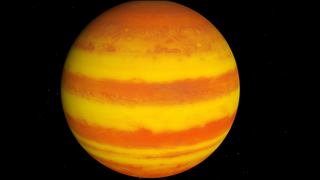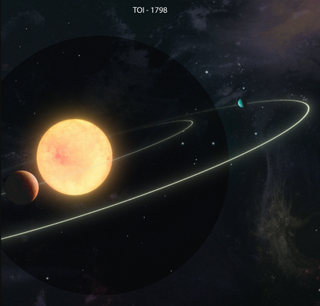A new catalog of 126 worlds beyond the solar system contains a cornucopia of newly discovered planets – some are extreme and exotic in nature, but others could potentially support life as we know it.
The catalog’s mix of planets is further evidence of the great and wild variety of worlds beyond our cosmic backyard; it even shows that our solar system may be a little boring. Yet even though these planets are so different from Earth and its neighbors, perhaps they can help us better understand why our planetary system looks the way it does, revealing our place in the larger cosmos.
The catalog of extrasolar planets, or “exoplanets,” was created using data from NASA’s Transiting Exoplanet Survey Satellite (TESS) in collaboration with the WM Keck Observatory in Hawaii.
“With this information, we can begin to answer questions about where our solar system fits into the grand tapestry of other planetary systems,” said Stephen Kane, principal investigator of the TESS-Keck survey and an astrophysicist at the University. of California in Riverside, in a press release. statement.
Related: NASA space telescope discovers Earth-sized exoplanet that’s ‘not a bad place’ to hunt for life
The new TESS-Keck survey of 126 exoplanets really stands out from previous exoplanet surveys because it contains complex data on the majority of the planets included.
“Relatively few known exoplanets have a measure of both mass and radius,” Kane added. “The combination of these measurements tells us what the planets might be made of and how they formed.”

“Seeing red” to measure the masses of exoplanets
The catalog was built over a three-year period as the team used 13,000 measurements of tiny “oscillations” caused by planets as they orbit their stars and exert a small gravitational pull on them. This tug causes a star to move slightly away, then slightly toward Earth.
When stars are slightly apart, this stretches the wavelengths of the light they emit, moving them toward the “red end” of the electromagnetic spectrum. As stars move toward Earth, the wavelength of the light they leave out is compressed slightly, making it “bluer.”
Exploiting redshift and blueshift in this way by astronomers is called the “radial velocity method.” Because the strength of the gravitational pull a planet exerts on a star is proportional to its mass, this is a good way to determine mass. Thus, the radial velocity method allowed Kane and his team to determine the masses of 120 confirmed exoplanets and six candidate exoplanets.
“These radial velocity measurements allow astronomers to detect and learn the properties of these exoplanetary systems,” said Ian Crossfield, an astrophysicist at the University of Kansas and co-author of the catalog. “When we see a star oscillating regularly, we can infer the presence of an orbiting planet and measure the mass of the planet.”
Interestingly, some of the 126 exoplanets in the TESS-Keck survey could deepen astronomers’ understanding of how a collection of diverse planets form and evolve.
A strange super-Earth, a sub-Saturn and much more!
Two of the new planets shown in the TESS-Keck survey orbit a sun-like star called TOI-1386, located about 479 light-years away.
One of these exoplanets has a mass and width that places it somewhere between the solar system’s gas giant Saturn and the smaller, less massive ice giant Neptune. This makes this planet, designated TOI-1386 b, a “sub-Saturn” planet and a fascinating target for planetary scientists.
“There is an ongoing debate about whether sub-Saturn planets are truly rare, or whether we are just bad at finding such planets,” UCR discoverer and graduate student Michelle Hill said in the release. . “So this planet, TOI-1386 b, is an important addition to this planetary demographic.”
At a distance from its parent star equivalent to about 17% of the distance between Earth and the sun, TOI-1386 b takes only 26 Earth days to complete an orbit.
Its nearest neighbor, recently discovered, is a little quieter. TOI-1386 is a bloated gas giant that is about as large as Jupiter, but with only 30% of the mass of the solar system’s largest planet. It is approximately 70% of the distance between Earth and the Sun from its parent star and its year length is approximately 228 Earth days.

Another fascinating world among this batch of exoplanets is about half the size of Neptune, with more than ten times the mass of Earth, orbits TOI-1437 (also known as HD 154840) and is located about 337,000 light years away.
Designated TOI-1437 b, the sub-Neptunian planet orbits its star about 14% of the distance between Earth and the sun and has a year that lasts about 19 Earth days. Discovered by TESS thanks to the small dip of light it causes when it crosses the face of its star, TOI-1437 b is one of the rare sub-Neptunes known to transit its star which has a mass and a radius well defined.
TOI-1437 b also highlights a curious absence in our cosmic backyard.
“Planets smaller than Neptune but larger than Earth are the most common worlds in our galaxy, but they are absent from our own solar system,” said discoverer and UCR graduate student Daria Pidhorodetska in the press release. “Every time a new universe is discovered, we are reminded how diverse our universe is and that our existence in the cosmos may be more unique than we can understand.”

Another interesting exoplanet detailed for the first time in this new catalog is TOI-1798 c, a super-Earth that orbits so close to an orange dwarf star that its year lasts about 12 Earth hours.
“A year on this planet is less than half a day on Earth,” study lead author Alex Polanski, a graduate student in physics and astronomy at the University of Kansas, said in the release. “Because of their proximity to their host stars, planets like this are also ultra-hot: they receive more than 3,000 times the radiation that Earth receives from the sun.”
This makes the TOI-1798 planetary system, which also hosts a sub-Neptune planet that completes an orbit in about eight days, one of the few star systems known to have an internal super-Earth planet with an ultra-short period (USP ) orbit.
“While the majority of planets we know today orbit their star faster than Mercury orbits the sun, the USPs take this to the extreme,” Pidhorodetska added. “TOI-1798 c orbits its star so quickly that a year on this planet lasts less than half a day on Earth. Due to their proximity to their host star, USPs are also ultra hot – receiving more than 3,000 times the radiation Earth receives from the sun. Existing in this extreme environment means this planet has likely lost all of the atmosphere it originally formed.
The release of the TESS-Keck Survey mass catalog means that astronomers now have a way to explore in depth the work of TESS, launched in April 2018, and assess how it has changed our understanding of exoplanets.
While thousands of planets from the TESS mission alone have yet to be confirmed, releases of exoplanet catalogs like this are expected to become more common.
“Are we unusual? The jury is still out on that question, but our new mass catalog represents a major step toward answering that question,” Kane said.
Exoplanets are described in the Thursday, May 23 edition of The Astrophysical Journal Supplement.